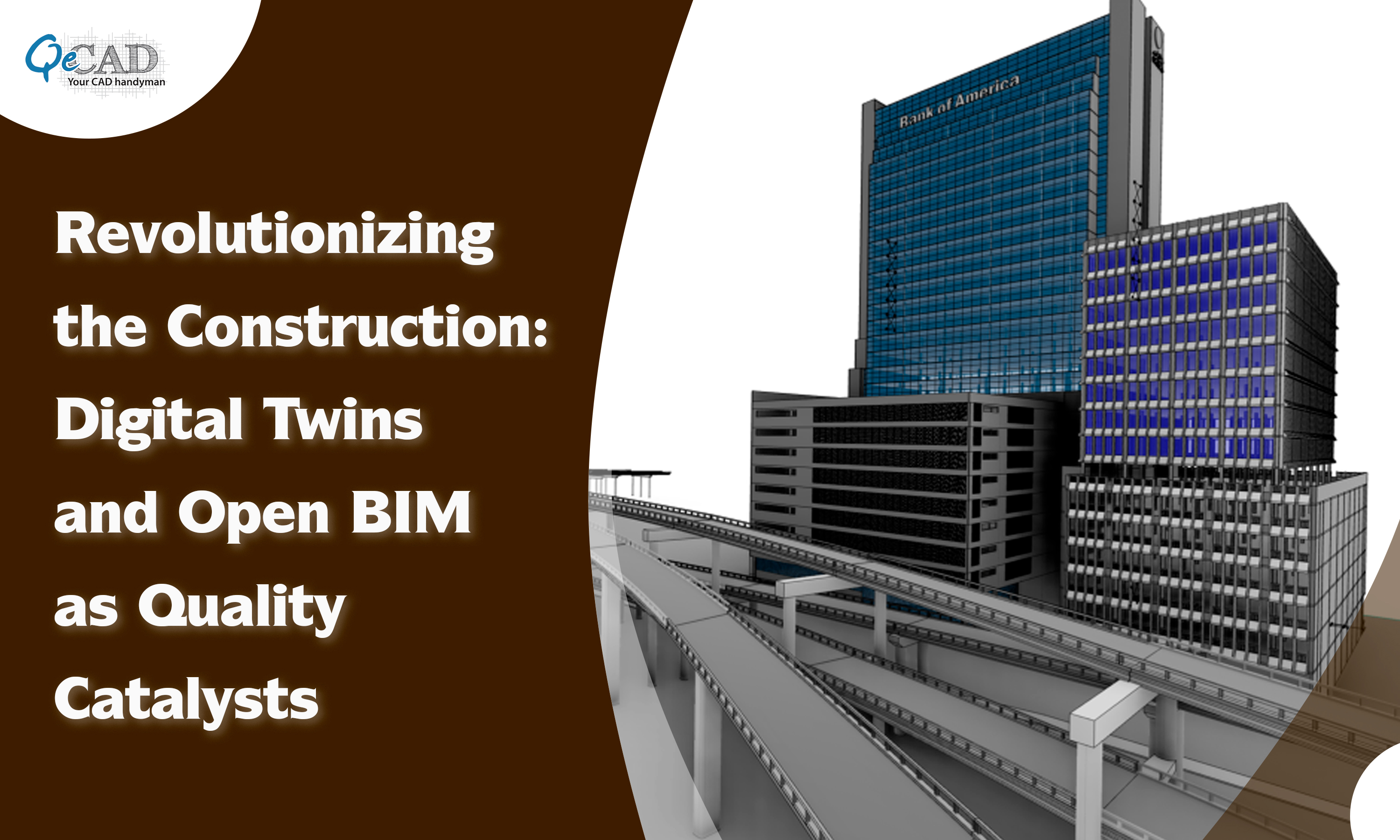
Introduction:
The construction industry is undergoing a paradigm shift driven by technological innovations that promises to revolutionize the way we plan, design, construct, and manage buildings. Two key concepts in this transformation are digital twins and open BIM. These technologies are reshaping the way of construction, improving collaboration, thereby enhancing the quality of construction projects.
Understanding Digital Twins:
Digital twins refer to virtual replicas of tangible entities, procedures, or frameworks. In the construction context, a digital twin is a digital counterpart of a building or infrastructure. This includes not only the static aspects like architectural elements but also dynamic elements such as systems, sensors, and environmental conditions. The goal is to create a real-time, data-rich representation of the physical asset.
Digital twins enable stakeholders to visualize, analyse, and simulate various scenarios throughout the construction lifecycle. By leveraging sensors, IoT devices, and data analytics, project teams can monitor the performance of the physical asset in real time, identify issues, and optimize operations. This level of insight empowers informed decision-making, reduces risks, and ultimately enhances the overall quality of construction projects.
The Role of Open BIM:
BIM Services has long been a cornerstone in the construction industry, providing a digital representation of the physical, practical, and operative characteristics of a building. Open BIM takes this concept a step further by promoting interoperability and collaboration among different software applications and project stakeholders.
Open BIM standards facilitate seamless communication and data exchange between various BIM tools, allowing architects, engineers, contractors, and owners to work collaboratively in a more integrated manner. This interoperability is crucial for fostering transparency, minimizing errors, and optimizing the construction procedure.
Integrating Digital Twins with Open BIM:
The synergy between digital twins and open BIM is a game-changer for the construction industry. By combining the real-time, data-driven insights of digital twins with the collaborative and interoperable nature of open BIM, construction projects can achieve unprecedented levels of efficiency and quality.
1) Improved Collaboration:
-
- Open BIM enables different stakeholders to work on a shared model, fostering collaboration and reducing the likelihood of errors caused by miscommunication.
- Digital twins offer a unified platform for stakeholders to visualize the project, facilitating better understanding and communication.
2) Enhanced Design and Planning:
-
- Open BIM allows architects and engineers to seamlessly integrate their designs, ensuring that all aspects of the project are considered from the beginning.
- Digital twins enable real-time simulations and analyses, allowing teams to optimize designs for performance, energy efficiency, and other key factors.
3) Construction Monitoring and Control:
-
- Digital twins, equipped with IoT sensors, provide continuous monitoring of construction progress, allowing teams to identify and address issues promptly.
- Open BIM ensures that as-built data is accurately reflected in the digital twin, creating a reliable basis for ongoing operations and maintenance.
4) Data-Driven Decision-Making:
-
- The integration of digital twins and open BIM creates a rich dataset that can be analyzed to derive actionable insights.
- Data-driven decision-making empowers stakeholders to make informed choices that contribute to the overall quality and sustainability of the construction project.
5) Lifecycle Management:
-
- Digital twins, supported by open BIM standards, facilitate seamless data transfer across the entire lifecycle of the building.
- This ensures that information remains up-to-date and relevant, supporting efficient operations, maintenance, and potential future renovations.
Challenges and Considerations:
While the potential benefits of combining digital twins and open BIM are immense, challenges exist. These include concerns about data security, standardization, and the requirement for a proficient workforce capable of harnessing these advanced technologies. Overcoming these challenges requires a concerted effort from industry stakeholders, policymakers, and educational institutions.
Conclusion:
The integration of digital twins and open BIM represents a technological leap forward for the construction industry. This convergence not only enhances collaboration and communication but also introduces an enhanced level of transparency and efficiency to construction projects. As we continue to embrace these innovations, the industry is poised to deliver higher-quality buildings, reduce costs, and contribute to a more sustainable built environment. The journey towards a digitally transformed construction sector is well underway, and the synergy of digital twins and open BIM is at the forefront of this revolution.
